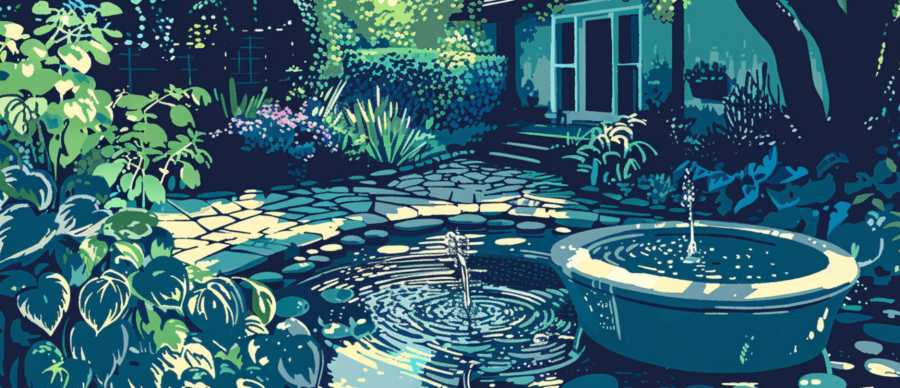This simple tool, usually braided nylon or polyester, lets you draw razor-straight lines, square off angles, and set up an entire landscape layout without measuring every foot with a tape. And it won’t roll its eyes when you make a mistake.
Choosing Your Line: Not All Strings Are Created Equal
Before wrapping anything around stakes, you need to pick the right kind of string. You can get cheap twine, of course — and you’re also welcome to watch it snap and tangle on day two.Braided nylon string line is the gold standard here. It’s strong, UV-resistant, and doesn’t stretch much, so once it’s tight, it stays tight. Polyester is another good option, particularly for very wet climates, but nylon generally has the edge on strength.
Now for the subtlety you didn’t know existed in string shopping: thickness and length. String line typically comes in sizes ranging from #15 to #36.
- Thinner lines (#15–#18) are easier to see past and work well for delicate layout jobs — think herb spirals or tight garden paths.
- Thicker lines (#27–#36) are more visible, better in wind, and stronger for jobs that need tension — such as pulling tight for a long row or supporting young vines.
How to Lay Out Straight Garden Beds
Want that clean, magazine-perfect look where your garden beds align with your fence or patio? String line is your best friend.Start by driving two wooden or metal stakes into the ground at the start and end of your intended bed. Pull the line tight between them — you want banjo-string tension here — and tie it off. Walk back, squint one eye, and admire your sudden mastery of straightness. Adjust if it looks off.
From there, use the line as a guide to dig or edge the bed. For wider beds, set up a parallel line for the opposite edge. You can use a measuring stick or simply copy the distance with another piece of string — perfection isn’t required, unless you’re planning to impress a geometry professor.
Planning Row Crops Without Losing Your Sanity
Vegetable gardeners know: crooked rows are contagious. Start with one off-kilter row, and by the end of the season, the whole plot looks like modern art.To avoid this, set your string line where you want your first row. Lay it low — just an inch above the soil — and plant directly beneath it. Move the stakes, repeat. Want consistent spacing between rows? Cut a piece of wood or PVC to the desired width and use it as your spacer.
This technique is especially useful for crops that require hilling, like potatoes or corn. The string helps you maintain neat mounds or furrows — unless you enjoy the thrill of chaotic root geometry.
Supporting Vines and Climbers with String Lines
Here’s where things get sneaky. String line doesn’t just sit on the ground like a glorified chalk mark — it can go vertical too.Drive two tall stakes or metal posts into the ground, then stretch a line between them horizontally at vine height. Beans, peas, cucumbers — they’ll all gladly latch onto this makeshift trellis. For extra structure, you can tie multiple horizontal lines at intervals up the stakes, creating a simple grid.
It’s cheap, fast, and ideal for renters, commitment-phobes, or those who built one too many overly ambitious wooden trellises in the past and still bear the emotional scars.
Designing Drip Irrigation Paths Without Breaking Out the Ruler
Drip irrigation systems work best when laid out with intention. Meandering hoses might look poetic in a watercolor, but they’re inefficient and prone to uneven watering. A taut string line lets you plan irrigation pipe placement precisely, whether along rows, between beds, or around permanent shrubs.Lay out the string where your mainline or emitter tubing should run. It helps to use garden pins to secure the hose directly alongside the string before anchoring it fully. Want symmetry in a multi-bed layout? Use string to mirror spacing on each side, so your garden doesn’t look like it was designed by a team of blindfolded raccoons.
This is also a solid way to plan secondary lines or branching emitters. Plot everything in string first, step back, and adjust until you’re happy. Only then should you cut into the expensive tubing. Unlike string, that stuff doesn’t forgive.
The Straight and the Crooked: Pros and Cons of Going String-Based
Before you string your entire yard into a spiderweb of righteous alignment, consider both sides of the story.Pros:
- Cheap, portable, lightweight. Easy to use solo. No batteries or Bluetooth updates required.
- String doesn’t care if you’re working in clay, sand, or that weird mix of both that lives behind your garage.
- Provides instant visual alignment without relying on vague estimations or the power of prayer.
- Can trip you up if left low and unattended. (Literal booby traps.)
- Thinner lines may be hard to see in dim light — unless you enjoy gardening in headlamps.
- Doesn’t tell you if your entire bed is tilted unless paired with a level or old-fashioned eyeballing.
Tying It All Together Without Getting Tangled
A quick technique tip: learn a basic builder’s knot or clove hitch. They’re simple to tie, easy to adjust, and won’t slip under tension. Avoid over-hand knots that dig in and require curses and scissors to undo. Your future self will thank you, especially when the wind picks up or your dog decides the stake is a chew toy.Store string neatly. A tangled wad in a drawer might as well be a ball of existential frustration. Wrap it around a flat board or spool. Label it if you’re the type who alphabetizes seed packets. (If not, that’s fine. Your garden will still grow. Probably.)
String Theory You Can Actually Use
Landscaping isn’t always about artistry. Sometimes it’s about not planting in a drunken zigzag or rerunning irrigation three times because the lines looked “close enough.” String line is the unglamorous hero of layout — a tool that rewards a little care with straight rows, tidy beds, and a strange sense of peace when you finally get that edge perfectly square with the fence.Is it fancy? Not even close. But it works. And when you see your garden shaping up with clear lines and intentional form — when your cucumbers climb straight and your drip tubing obeys the laws of geometry — you’ll know: that cheap roll of braided nylon was one of the smartest things you ever bought for the garden.
Article kindly provided by acesupplyusa.com


